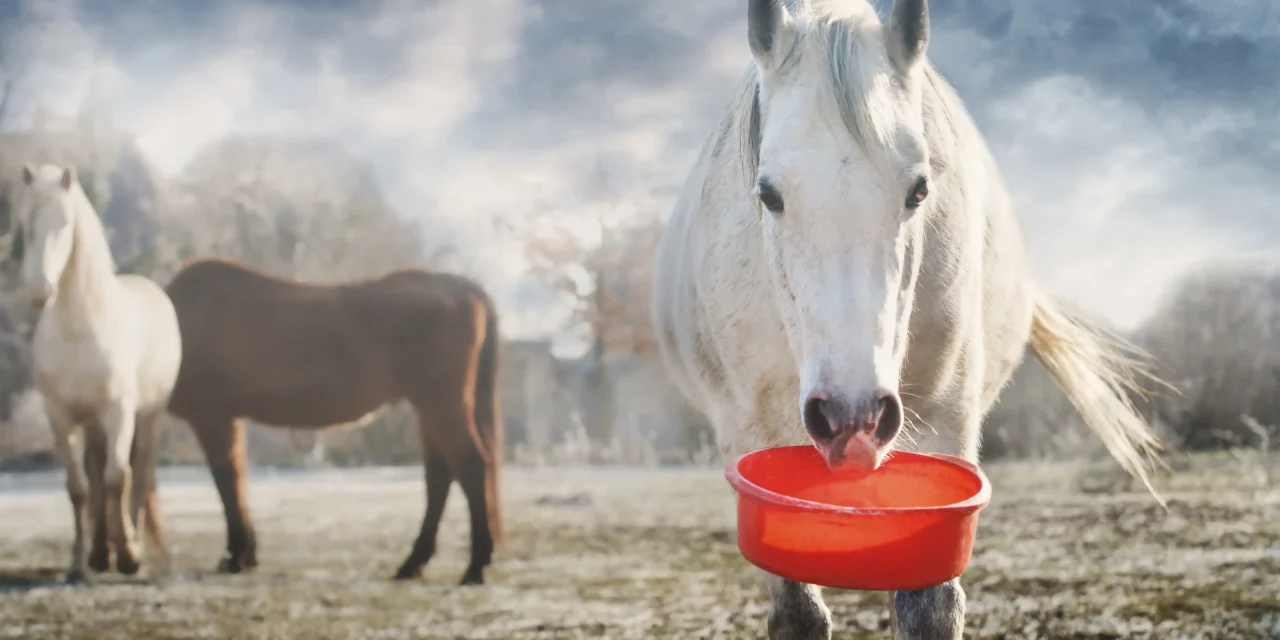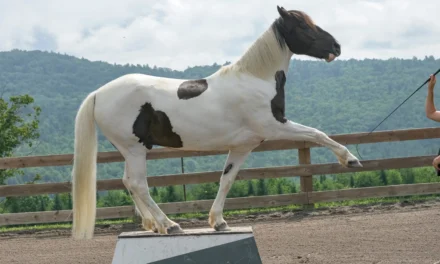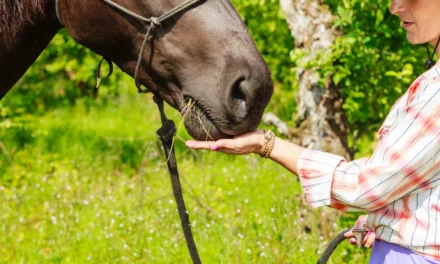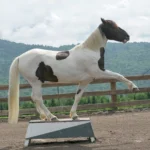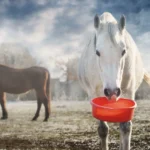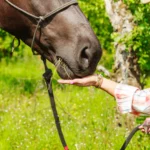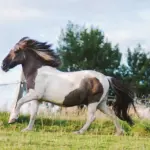Key points at a glance:
- Complex tasks must be broken down into individual steps
- Each step is trained and reinforced separately
- The criteria are raised step by step
- The individual parts are gradually joined together
- Patience and precise timing are crucial
The art of shaping
Teaching a horse to lower its head politely when you want to put on the headcollar is one of the relatively simple tasks that can be achieved quickly with positive reinforcement and precise timing. With clicker training, however, you can also teach highly complex tasks — as long as you break them down into sufficiently small steps. Take “retrieving” a feed trough as an example. It’s a complex task made up of many separate actions. To us, it looks like a single action: “Bring me the trough.” For training purposes, though, we need to break it down into its basic building blocks and build it up step by step. This process is called “shaping” — gradually shaping the desired behaviour.
Essential foundations
Before we start the actual training, the horse should:
- Clearly understand the click as a marker signal
- Know the basic clicker rules (no begging for treats)
- Be curious and motivated
- Work with us in a trusting way
The training plan
It’s best to carry out this kind of learning exercise in a quiet environment, such as a round pen or an otherwise empty arena. Trying it in the turnout area will only distract our pupil with other horses. The same applies if other horses are being ridden or lunged in the arena at the same time. The fewer outside distractions there are, the better our horse can concentrate — and the quicker we will see progress.
Phase 1: Sparking interest in the object
First, the feed trough needs to become an interesting item for the horse. “Click” below always means “click and reward” — we’ve shortened it for easier reading. We start with:
- Click for looking at the trough
- Click for stepping towards the trough
- Click for pointing the nose towards the trough
- Click for every touch of the trough
Important in this phase: the horse should learn that interacting with the trough leads to positive outcomes. At the start, we click very generously for any sign of interest in the object.
Phase 2: Targeted interaction
Once the horse has understood that the trough is interesting, we encourage more active behaviour:
- Click for nudging the trough with the nose
- Click for stronger nudges that move the trough
- Click for touching the trough with the lips
- Click for opening the mouth on the trough
In this phase, we make sure the horse becomes more active and tries out different behaviours. We wait until each behaviour is reliably offered before raising the criteria.
Phase 3: Moving the trough
Now it gets exciting — the trough should start to move:
- Click for lifting the edge of the trough with the lips
- Click for holding on a little longer
- Click for the first small movements of the trough
- Click for more deliberate movements in one direction
This is often the most challenging phase. Some horses quickly try out different options, while others need more encouragement. The important thing is to mark every tiny bit of progress positively.
Phase 4: Learning to carry the trough
Once the horse can pick up the trough confidently:
- Click for taking one step with the trough
- Click for taking several steps
- Click for changing direction
- Click for carrying it to a specific point
Carrying the trough over longer distances usually develops on its own once the previous phases are well established.
Phase 5: Establishing the handover
The final step is teaching a clear handover:
- Click for bringing the trough close to us
- Click for putting it down in front of us
- Click for releasing it cleanly
- Click for completing the entire sequence
Phase 6: From exercise to reliable behaviour
Once all the individual parts work reliably, the exercise can be reinforced in different situations:
- Different starting positions of the trough
- Varying distances
- Different environments
- Introducing distractions
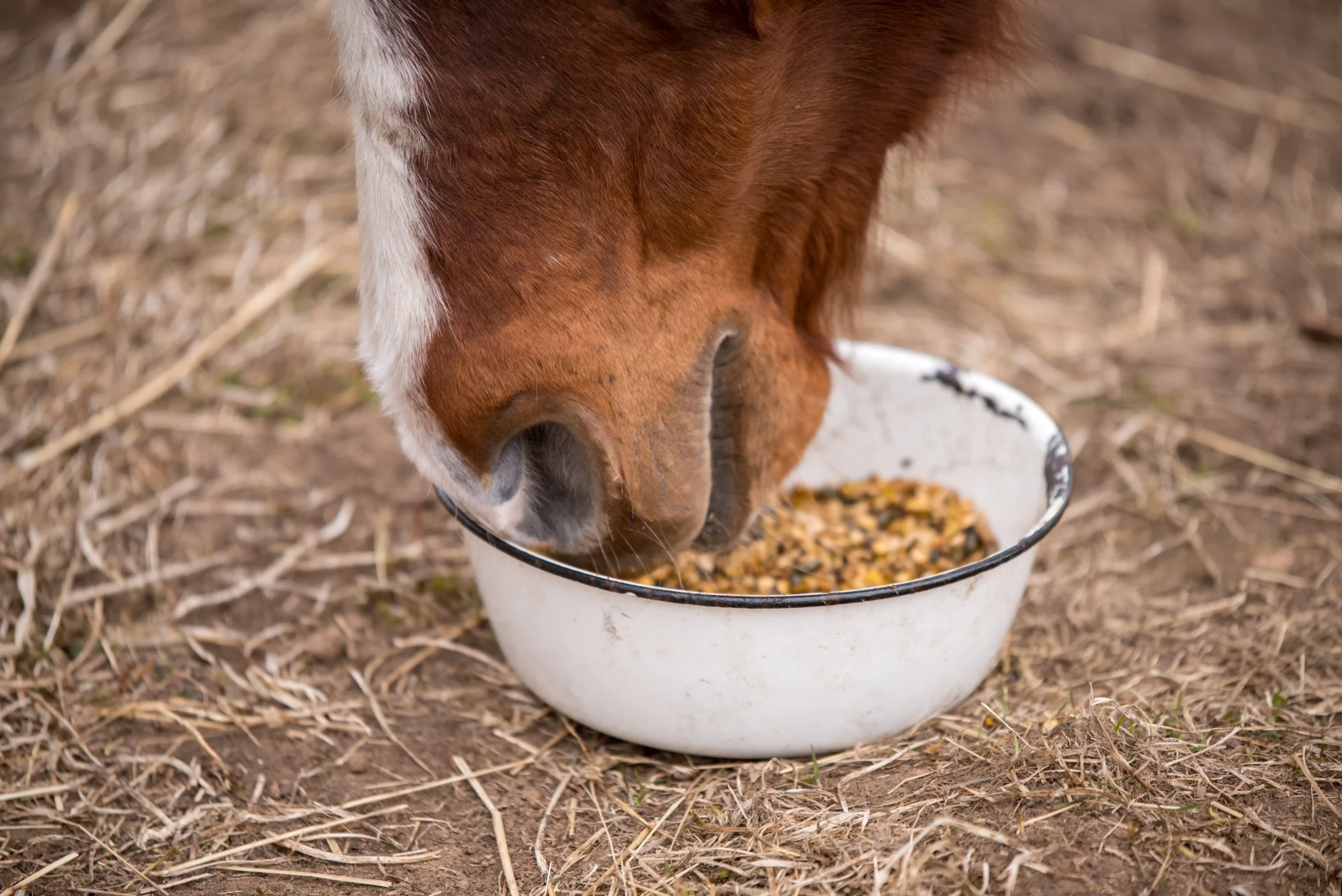
Tips for successful training
Getting the timing right
With complex tasks, timing is especially important:
- Mark the exact right moment
- Don’t wait too long for improvements
- Better to click too often than too rarely
- If unsure, take a step back
Motivation management
To keep motivation high during complex tasks:
- Never try to train the whole sequence in a single day
- Keep sessions short and successful
- Switch between phases
- Reward achievements generously
- Take a break if motivation starts to drop
Common challenges with complex tasks
The horse loses interest
- Return to the last successful step
- Lower the criteria temporarily
- Check the quality of the rewards
- Add occasional “jackpot” treats
- Keep training sessions shorter
Frustration in the horse
- Start with short, simple tasks
- Immediately switch back to an easier exercise
- Create moments of success
- Redefine intermediate goals
- Stay patient
Practical benefits
What may at first seem like a mere “circus trick” can be genuinely useful:
- The horse learns to move objects in a controlled way
- It develops problem-solving strategies
- The partnership with the human is strengthened
- Complex action chains become understandable
These skills also carry over into other areas of training, making the horse a more active, thinking partner.
It’s fascinating to watch a horse’s development when you start with very simple exercises and gradually increase the complexity. For example, you can easily practise hoof lifting with clicker training, even with a young horse. Once horses understand the basic principle, most of them are highly motivated to tackle more challenging tasks.
Training complex tasks with clicker training clearly demonstrates what horses can achieve when we break tasks down into manageable steps. Success depends on careful planning, precise marking, and patiently building each stage of the training process.
- Clicker training and trick training – more than just a show - 29. September 2025
- Solving complex tasks with clicker training – an example exercise with a feed trough - 29. September 2025
- Understanding clicker training – more than just handing out treats - 29. September 2025

